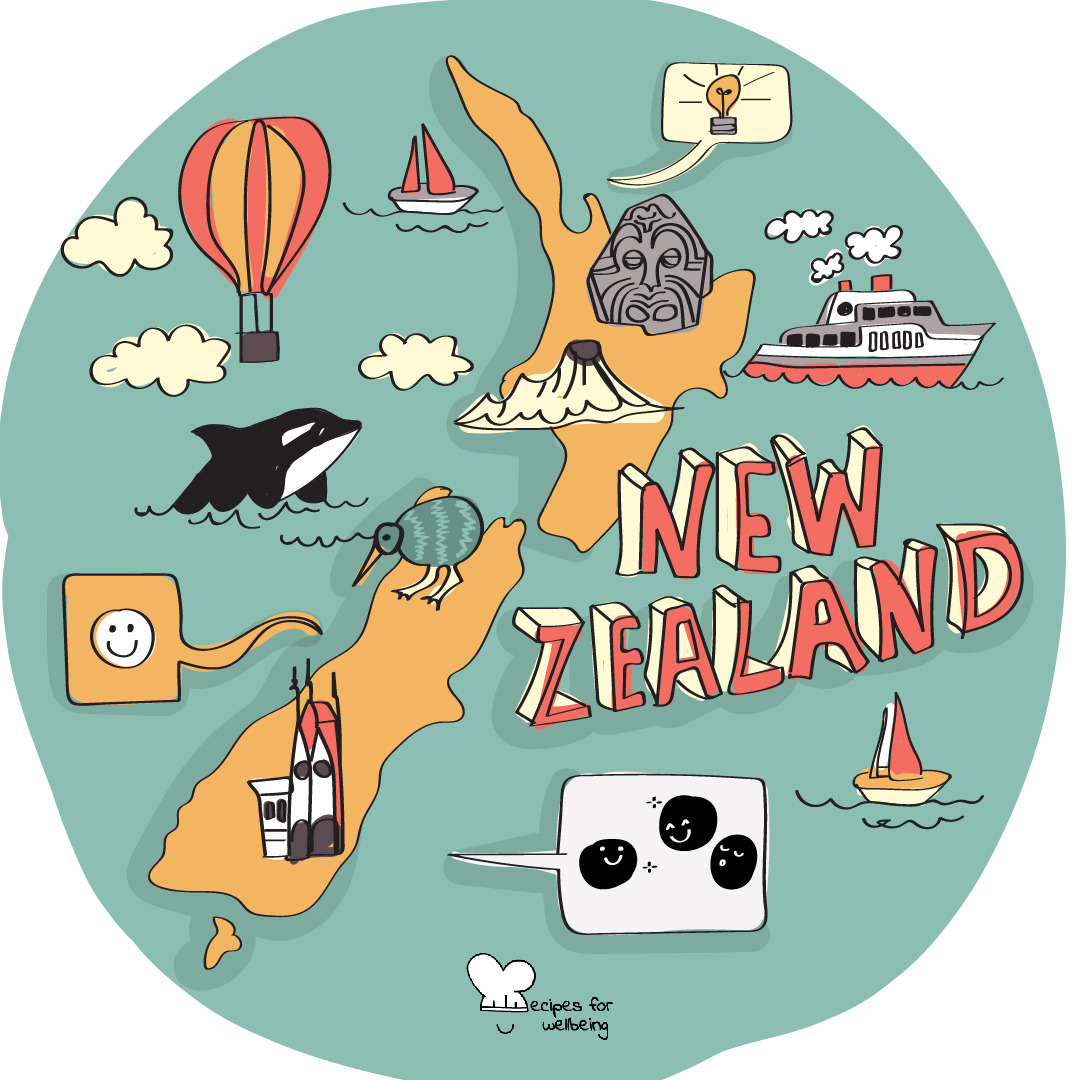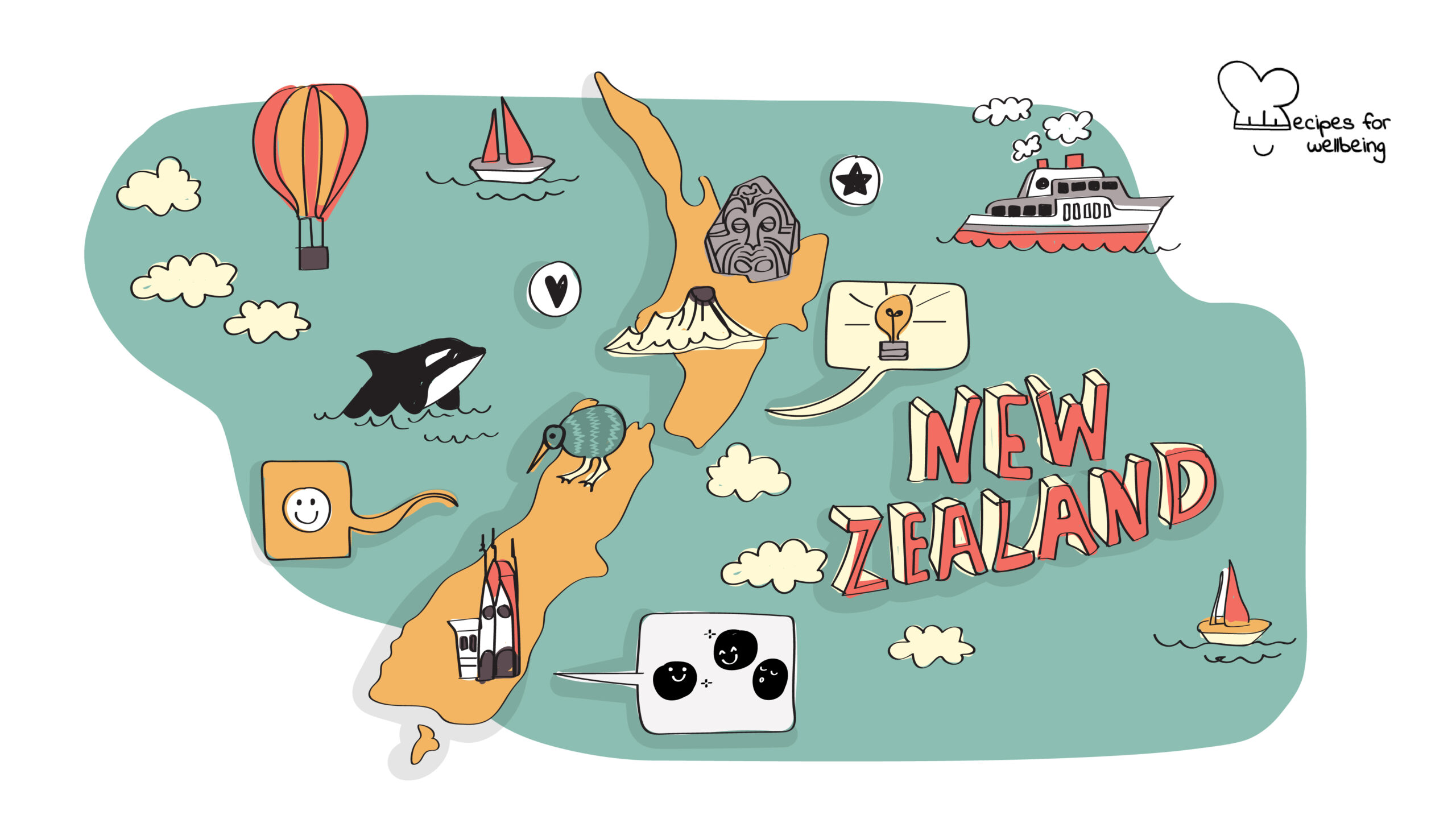
Inspiration from Ngā Tūtohu Aotearoa
In dividing the light, things are seen. And we notice ourselves. ―John Allison
 Serves: 26-40 people, 41+ people
Serves: 26-40 people, 41+ people
 Difficulty: Medium
Difficulty: Medium
 Total time: Ongoing
Total time: Ongoing
 Ingredients: Your community or organisation, open-mindedness
Ingredients: Your community or organisation, open-mindedness
 Wholebeing Domains: Accomplishments, Positive Emotion, Radical Care
Wholebeing Domains: Accomplishments, Positive Emotion, Radical Care
 Wholebeing Skills: Acknowledgement, Ambition, Holding space, Joy, Legacy, Listening, Optimism, Planning
Wholebeing Skills: Acknowledgement, Ambition, Holding space, Joy, Legacy, Listening, Optimism, Planning

Inspiration from Ngā Tūtohu Aotearoa
 Description
Description
Inspiration from New Zealand’s wellness practices.
Are you wondering what Nga Tūtohu Aotearoa is? It’s “New Zealand Recommendations” in the country’s language, Māori!
Back in 2018, the country of New Zealand (NZ), in line with Statistics New Zealand, asked the citizens and peoples of the country, “What does wellbeing mean to you?” The goal was to look beyond the economy and GDP, and see what could be done within governments’ decision making and policies to improve the lives of everyone, inclusive of wellbeing practices, for today and for future generations.
The government listened to the citizens and created a series of wellbeing factors on various topics such as mental health, clean drinking water, access to affordable and safe housing, spiritual health, income, social support, feeling safe, underemployment, air quality and more. This recipe is possible to be done on a large scale, within the government and on a small scale, for grassroots organisations.
This recipe has been inspired by the work of the New Zealand government and adapted by our wellbeing content writer collaborator Marissa Del Mistro.
 Steps
Steps
Step 1 – Engage stakeholders and community members (2–3 months)
Inform people of the plan to engage with them to gather their insights on what matters most to leading a life of prosperity, wellness, and joy. This can be done through marketing, communicating with various organisations, from grassroots to corporations.
If you are doing this practice on a smaller scale, for example, within your organisation, it should take much less time to spread the word and can be done through presentations, meetings, events, or flyers.
Step 2 – Gather information (5–6 months)
Stats NZ ran a series of events, workshops, and interactive sessions where citizens could contribute their thoughts and feelings on the topic of wellbeing and what it meant to them.
The same process can be followed, depending on how wide/large scale your process is. The most important aspect is to ensure inclusivity to encourage a wide range of voices, stories, and feedback. This should incorporate accessibility tools for less able-bodied folks, translators if necessary and should be mindful of daycare or child care facilities to encourage families – as their children are the future.
Step 3 – Collate and analyse (2 weeks)
Depending upon the size of your project/organisation, it may take less time to collate the rich and informative data you have collected. For this stage, it might be helpful to gather consultants or data analytics from outside the organisation to provide their expertise to ensure the information is truly derived from the people who were asked.
Step 4 – Indicator selection presentation
A time to celebrate the selected indicators based upon popularity and necessity. These indicators will range depending on the project and have variation across the theme of wellbeing from health to housing to food and education. There does not have to be a limit to how many indicators there are.
It can be nice to make a spectacle about the indicators by hosting an event and celebrating what is to come in terms of change and measuring that change.
Step 5 – Regular monitoring (ongoing)
With the NZ model, their wellbeing monitoring data and information is readily available through their website in various languages. This increases accountability and transparency. It also keeps the momentum going for these developmental changes and ensures the government is putting into place various policies to support what the citizens need to live a full life.
Regular monitoring and access to such data are vital. Whether it is through a website, regular meetings, or a newsletter, change needs to be monitored and available to encourage trust and foster transparency.


 Arabic
Arabic Chinese (Simplified)
Chinese (Simplified) Dutch
Dutch English
English French
French German
German Italian
Italian Portuguese
Portuguese Russian
Russian Spanish
Spanish